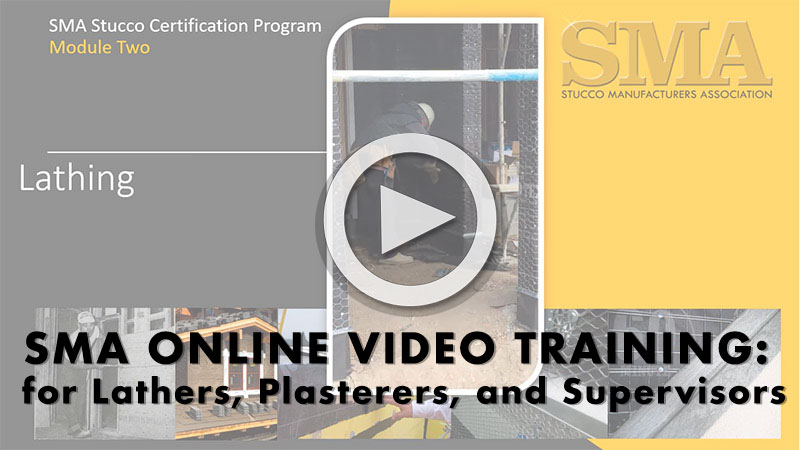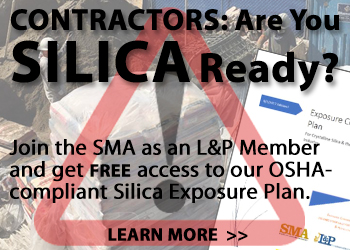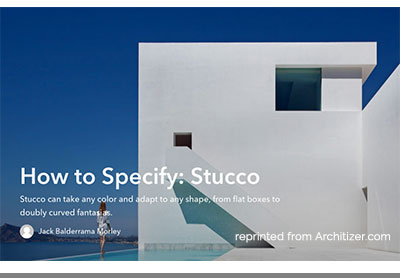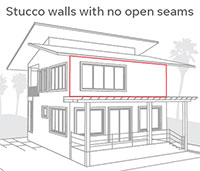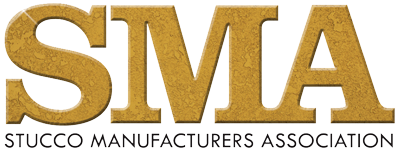FROM THE SMA EXECUTIVE DIRECTOR

Mark Fowler, SMA Executive Director
The Stucco Manufacturers Association (SMA) is working hard to promote stucco. Even with Covid keeping our in-person meetings to a minimum. The SMA has been doing a variety virtual meetings, classes and assistance to the architectural community. As codes and standards increase in complexity, they will need more and more help. The SMA is there for them. The SMA is a non-profit association representing the industry as a whole, not a single manufacturer, not a specific system or contractor, but all the industry. This makes the SMA a little unique and gives us influence. The SMA does not turn down or charge a fee to anyone calling in for assistance. Architects, general contractors and building owners look at the SMA as a kind of Consumer Reports group on steroids. The SMA also works hard to make sure members products and services are listed and referenced in project specifications. The SMA will recommend specific products when a perfect fit is noted or asked if there is a recommendation, this happens a lot.
Many designers are finding the SMA Contractor certification program particularly useful. Only a state license with the lowest bid is not much assurance the contractor is qualified to do the work. The SMA now has certified contractors in four states and expanding. Recently we even had an inquiry from England. The reviews of the six modules of training are overwhelmingly positive. The most impactful and relevant comments come from installers ( lathers and plasterers) who say they learned something new. If you have not checked out the modules yet, they are free, yes free to everyone to watch (online training program). The SMA felt it was important to make an effort to standardize industry practices, yet still allow for regional preferences. The goal is to make this a wide spread program that is nationally recognized and there is a powerful reason why. The SMA recently sat with one of the overall Insurance industries board of directors and she thought our program was great and compared it to the national roofing industry program, those contractors enjoy reduced premiums as the insurance industry feels more confident in their work. However, that group is more wide-spread as compared to us as we are just getting started. The insurance industry is looking to us to hopefully make a difference. Promoting the SMA certification program is a step to reduced risk for them and lower insurance premiums for you. What is the cost of certification? It is essentially free to SMA members. The future is in your hands, it is your industry and action or inaction will direct us all. (How to become Certified)
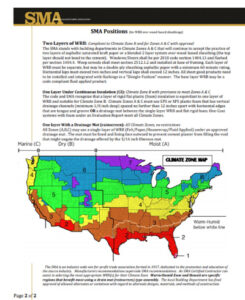 INDUSTRY NEWS
INDUSTRY NEWS
New 2021 code- the new International codes have significant changes when cement plaster is applied over wood-based sheathing. For the first time the codes mandate variations in application and design with regard to Climate Zones. The climate zones would technically be more appropriately called “moisture” zones. There are three of these zones for the United States A (moist), B (dry) or C (marine). The SMA has been giving classes to installers and even building departments on this new change. You maybe thinking “I have not seen this on my project, how can this be true?” The code cycle is every three years and the international codes come out first with state and local codes following in the next few years. So, get ready, it is coming as it has been written and published, just yet to be enforced. If you have not downloaded the SMA Tech Times bulletin on this topic, consider doing this soon, at least before the code hits you in the face. A word of caution, in litigation ignorance of the law, particularly when it is very industry specific, is not typically a viable defense. Be informed, be prepared.
MARKET NEWS
EAST vs WEST
While drywall is used with great regularity around the United States, stucco is only popular in some pockets or regions. Many believe that stucco is only suitable for warm dry climates. This explains why stucco is so popular in Southern California, Texas and Florida. Yet, it is hard to imagine Florida as dry. It maybe more accurate to state some believe stucco is NOT suitable for snow regions of the country. Due to freeze thaw concerns. However, the Swiss and Germans have used and continue to use cement stucco all the time. The truth is stucco works in all climates. High moisture areas simply require a little more attention to flashings, cold or snow regions require thinking of snow drifts, but it is not difficult to make stucco work anywhere.
The southern sections of east and the west coast are both popular stucco markets. With contractors’ members in all regions, the SMA must be adaptable to each region. The sad truth is that many experts in a region feel their way is the “only” way to install lath and plaster. This is what makes the ASTM committees a hot bed of in-fighting. They rarely agree on anything and seem unwilling to capitulate the other side has a proven regional practice. This explains why many contractors on both coasts routinely turn to the SMA for help with clarification on standards and allowed industry practices. Some feel we need a single inflexible standard with no allowances for regional practices, but how could that possibly work? Adding to the fact the international code has now set a precedent of regional practices by implementing the three climate zones with very different installation practices, it seems impossible. Whether we like it or not, there are regional practices and preferences. Most on the east coast refuse to use woven wire lath and that is fine. But the SMA will not state it is illegal. Here are some generalities about each coast of the USA regarding stucco.
WEST COAST: Pumping cement plaster is king in the west. The crews have mastered the art of machine application and the result is lower installed costs on basic residential tract work. It is so low, that vinyl siding has a hard time competing against stucco. This in turn allows custom homes to look at smooth trowel plaster. The added cost of the base and mesh to reduce cracks have made smooth trowel plaster the once hated finish to a preferred and affordable finish in the high end markets. One coat stucco is also gaining popularity , mostly in the residential market due to the Tongue and Groove insulation providing continuous insulation. More good news, these systems have been tested and meet the more stringent code requirements for enhanced drainage for Climate Zones A and C. Commercial work is primarily three coat stucco for durability and the inherent fire ratings in the code. While there are slight changes on the west coast from south to north, installations are similar. Stucco is just less popular as you move further north up the coast. Ironically, the use of the plaster pumps is also less popular moving up north and can impact installed costs.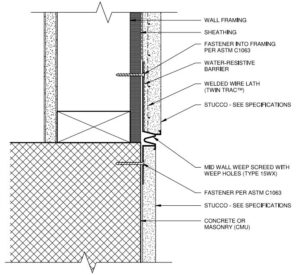
EAST COAST: The similarity for the east coast is the stucco market shrinks moving north, but does not seem to be related as much to machine production rates as other factors. Florida is the big market in the east. Unlike California, there is a major difference in application from south to north. In the southern part of the state, walls are mostly Concrete or CMU. The plaster becomes a parge coat and a finish may or may not be applied. Most stucco is painted. Elastomeric coatings are fairly popular. The vapor drive is opposite of the rest of the country, so that may be the better method of installation in that region. Moving north in Florida, projects start to see stucco on framing. It is also common to have the first floor CMU and the second-floor wood framing. This resulted in a massive number of leaks as the designers and installers failed to install a functioning weep device at the transitional floor line. That has been rectified and it is now common to use the PVC mid-wall weep screed as pictured. Both Plastic Components and Clark Dietrich manufacturer these products. They both have proven effective to stop the leaks.
TECHNICAL CORNER
COLD WEATHER PLASTERING
Cold weather is approaching. In parts of Canada, tenting the work is common practice. In really cold areas, they wait until Spring. It is true that freezing cement is a potential issue and should be avoided. Freezing stops the hydration process. This means the cement plaster does not get hard. The fear of freezing cement so great that manufacturers and ASTM prescribe that plaster should not be applied in temperatures below 40 degrees F. The SMA has experience in cold weather plastering with projects in Alaska, Minnesota and more moderate cities like Seattle. Many regions get cold, really cold and plastering should stop. However, much of the country is like Seattle. A kind of mix of sleet and frost. A Seattle pattern can be just below 40 F in the night and over 50F during the day. This is not an issue for Portland cement plaster. Cement plaster does not freeze easily. The temperature would have to be below freezing for at least a few hours for the cement to freeze. Even if it did, it can often be brought back the next day with minimal damp curing when temperatures climb above 40F. This also does not impact the cement plasters service life or its fire rating.
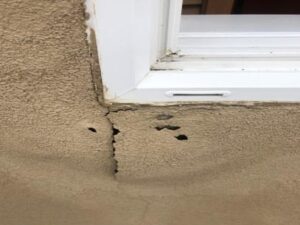
Acrylic finish coats are another story. They must be allowed to dry. Cement sets as it cures, we tend to say acrylics dry to a cure. While not technically accurate, it is better thinking this way. In addition, the acrylic dries from the outside in, as opposed to cement that cures from the inside out. What can happen is the acrylic gives what is called a “false set” on the surface. It may feel hard and cured, but is still soft against the cement plaster basecoat. If temporary protection protecting the acrylic finish is removed to soon, the set (cure) will never take place. The first rain or water can create bubbles or wash the acrylic off the basecoat. See picture . This is why plasterers in regions with temperatures than dip near freezing are very careful about using acrylic finishes in cold weather.
SMA BOARD OF DIRECTORS 2021
At the most recent SMA board of Directors meeting , Rick Durham was selected to be President of the SMA. Rick is from Texas and has a long history in the plastering industry. He was a plasterer and is a valuable resource to many of the contractors in his region. Rick has served on the board for the Texas Lath and Plastering Contractors Assoc (TLPCA) . as well as the National One-Coat Stucco Assoc (NOCSA). Currently Rick is running EZ Wall Concentrate, a producer of quality bagged cement products including basecoat stucco and tolling operations. Rick Durham believes in stucco and hopes to unite our efforts to preserve and grow the stucco market. He focuses on market share for our industry and limiting risks that plastering contractors face. His expertise and leadership will be helpful to guide the SMA into this new decade. Your SMA board of Directors:
Rick Durham- President (Texas)
Kevin Wensel-Vice President (California)
Justin Fleming- Treasurer (Florida)
Thom Susko – (California)
Herman Guevarra – (Florida)
Gary Goodwin – (Arizona)
DJ Farley – (California)
Dale Nehls – (Colorado)
NEWEST SMA CERTIFIED CONTRACTORS
Orlin’s Stucco – Florida 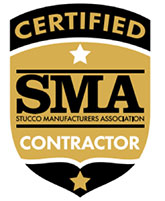
Prime Wall Systems – Texas
Onyx Group – California
Ronparco -Texas
SMV Stucco – Florida
HPS llc – California
Not Certified? It has benefits, strengthens our industry and works to lowering risk and reduced insurance premiums.
Get certified for the industry and yourself.
Please feel free to call the SMA office if we can be of any help.
Respectfully,
Mark Fowler , Executive Director
PLEASE NOTE: SMA OFFICE CONTACT INFORMATION
Mark Fowler, Executive Director
Marlene Lampert, Office Administrator
Stucco Manufacturers Association
5753 E Santa Ana Cyn Rd, Suite G-156
Anaheim, CA 92807
Office: 714-473-9579
Mark@stuccomfgassoc.com
Marlene@stuccomfgassoc.com
REMEMBER: The SMA has a fairly large library on all things stucco. Members of the SMA are encouraged to call the SMA office if the staff can be of any assistance.

